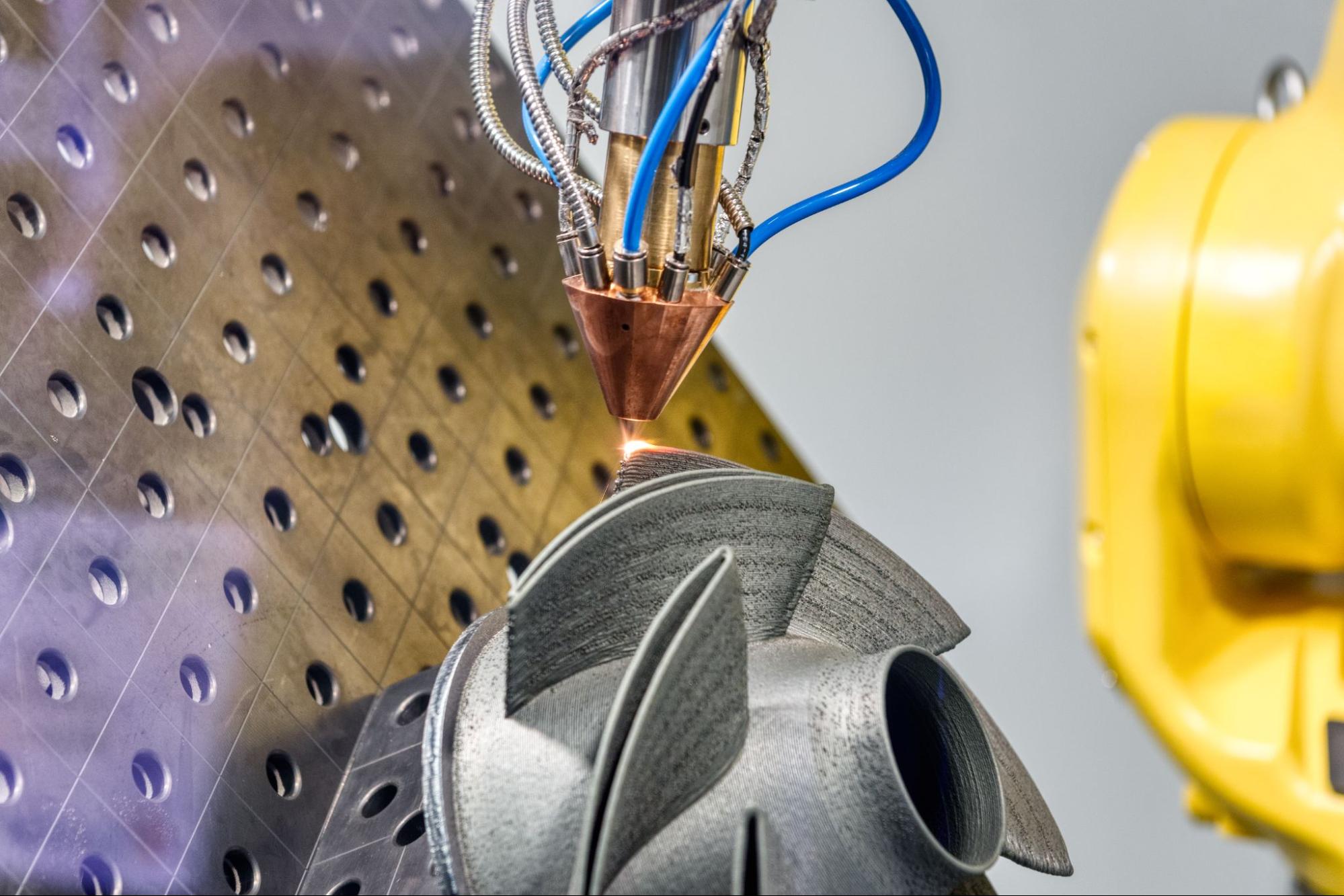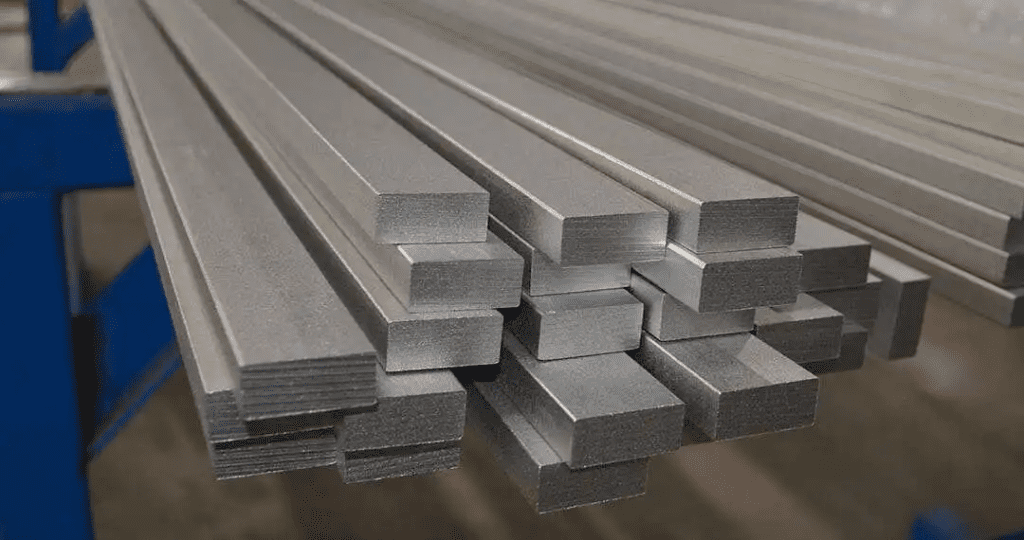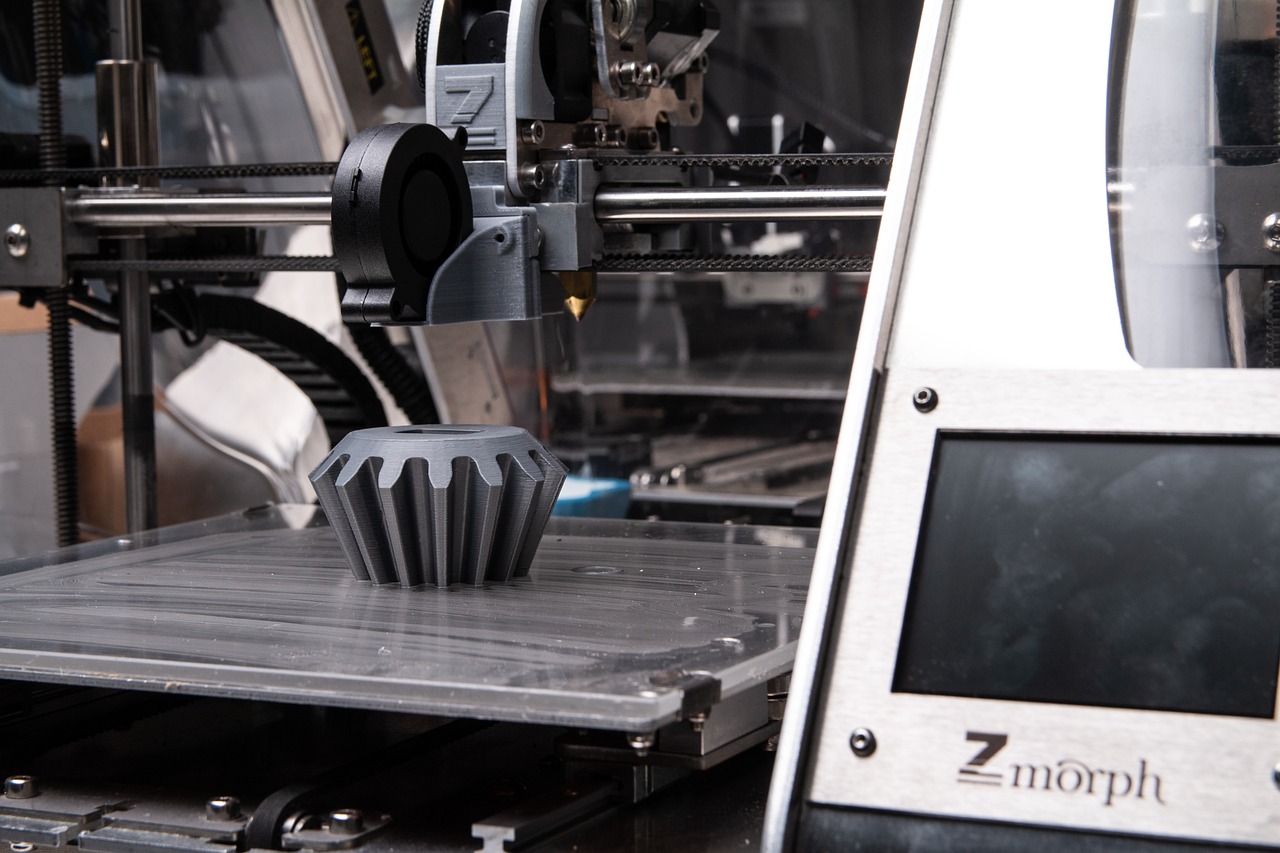Can metal be crafted layer by layer into intricate shapes that traditional methods can’t achieve? The answer is found in metal additive manufacturing or metal 3D printing. Emerging as a groundbreaking force in the 1980s, this technology has reshaped our approach to creating everything from simple tools to complex aerospace components.
Metal 3D printing introduced a new era where design limitations are vastly reduced, and sustainability is enhanced. This introduction explores how this innovative approach is enabling the creation of complex, high-performance parts with unprecedented ease.
What Is Metal Additive Manufacturing?
The metal additive manufacturing process is a technology that creates three-dimensional objects from a digital file. It involves the use of a 3D printer to deposit layers of material, typically metal powder, in precise geometric shapes.
As each layer is added, the material is fused together to form the final product, usually by a heat source such as a laser or electron beam. This process fundamentally differs from traditional manufacturing methods, which are often subtractive.
Traditional methods, such as milling or turning, start with a block of material and remove parts of it to achieve the desired shape. In contrast, additive manufacturing builds the object from the ground up, adding material where needed.
This allows for greater design freedom and the ability to create complex geometries that would be difficult or impossible with subtractive methods.
| Future Glimpse: Researchers are exploring the use of sound waves to manipulate metal powder in 3D printing. This could lead to breakthroughs in how metal parts are printed, making the process even more efficient. |
Types of Metal 3D Printing Processes
Metal additive manufacturing encompasses a variety of processes, each with its unique characteristics and applications. The most common types include the following:
Selective Laser Melting (SLM)
This process uses a high-power laser to fully melt and fuse metallic powders together. The laser traces the cross-section of the component, melting the metal powder and solidifying it to form a solid structure. SLM is commonly used with stainless steel, titanium, aluminum, and cobalt chrome alloys.
Direct Metal Laser Sintering (DMLS)
Similar to SLM, DMLS also uses a laser to fuse metal powders. However, DMLS does not fully melt the powder but sinters it, creating a porous structure. This process is often used with metals that are difficult to melt, such as titanium alloys.
Electron Beam Melting (EBM)
In EBM, an electron beam is used instead of a laser to melt the metal powder. The process takes place in a vacuum, which prevents oxidation and allows for the use of reactive metals. EBM is often used for manufacturing parts that require high strength and low weight, such as aerospace components.
Binder Jetting
This process involves spreading a layer of metal powder and then depositing a liquid binder to join the particles together. After the part is built, it is sintered in a furnace to burn off the binder and fuse the particles. Binder jetting is used with a wide range of metals and allows for full-color metal printing.
Metal Material Extrusion
Also known as Fused Deposition Modeling (FDM) for metals, this process feeds a metal filament through a heated nozzle that melts and extrudes it onto the build platform. The material solidifies upon cooling, forming the final part. This process is typically used for prototyping and small-scale production.
| Green Initiatives: Efforts are underway to produce more eco-friendly metal filaments from recycled materials. This aims to reduce the environmental footprint of metal material extrusion. |
Materials Used in Metal Additive Manufacturing
The metal additive manufacturing process utilizes a variety of materials, primarily metals and metal alloys, to create objects. The choice of material significantly influences the properties of the final product, including its strength, durability, heat resistance, and appearance.
- Titanium and titanium alloys: Known for high strength, corrosion resistance, and biocompatibility, making them ideal for aerospace, automotive, and medical uses. Titanium alloys, like Ti6Al4V, are especially popular.
- Stainless steel: Offers a balance of strength, corrosion resistance, and affordability. Variants such as 316L and 17-4 PH are frequently utilized.
- Aluminum and aluminum alloys: Chosen for their lightweight and good conductivity. AlSi10Mg alloy is common in automotive and aerospace for its strength and low weight.
- Nickel-based super alloys: These alloys, including Inconel 718 and Hastelloy, are valued for superior heat and corrosion resistance in high-temperature applications like jet engines.
- Cobalt-chrome alloys: Preferred for high strength, corrosion resistance, and biocompatibility, often in dental and medical applications.
- Precious metals: Gold and silver are used for their aesthetic qualities and corrosion resistance, mainly in jewelry.
- Tool steels: H13 and D2 are noted for their high hardness and wear resistance, ideal for creating molds, dies, and cutting tools.

Applications of Metal Additive Manufacturing
Metal additive manufacturing has a wide range of applications across various industries due to its ability to produce complex geometries, reduce waste, and shorten production cycles. The table below provides an overview of the applications of metal additive manufacturing in different industries:
| Industry | Applications |
| Aerospace | Engine components, structural parts |
| Automotive | Prototyping, custom parts, tooling |
| Medical | Custom implants, surgical instruments |
| Energy | Components for energy systems |
| Jewelry | Complex designs, efficient use of materials |
| Research and Development | Rapid prototyping, experimental applications |
Advantages of Metal Additive Manufacturing
Metal 3D printing offers several advantages over traditional manufacturing methods. These advantages have led to its increasing adoption across various industries, from aerospace and automotive to medical and jewelry.
Design Freedom
Metal additive manufacturing allows for the creation of complex geometries that would be difficult, if not impossible, to achieve with traditional manufacturing methods. This includes intricate internal structures, undercuts, and hollow parts. Designers are no longer constrained by the limitations of traditional manufacturing processes, opening up new possibilities for innovation and creativity.
Rapid Prototyping
This manufacturing process significantly reduces the time required to produce prototypes. A design can be created on a computer and then printed in a matter of hours, allowing for rapid iteration and testing of new designs. This speed can greatly reduce the time to market for new products.
Material Efficiency
In traditional manufacturing methods, material is often wasted as parts are cut or machined from larger blocks of material. In contrast, the metal additive manufacturing process builds parts layer by layer, using only the amount of material needed. This results in less waste and can lead to significant cost savings, especially when using expensive materials.
Customization
Metal additive manufacturing technologies make it economically feasible to produce customized parts in small quantities. This is particularly valuable in industries such as medical and dental, where implants and devices can be tailored to the specific needs of individual patients.
Toolless Production
Traditional manufacturing methods often require the creation of molds or dies, which can be time-consuming and expensive. Metal additive manufacturing eliminates the need for these tools, further reducing costs and lead times.
The table below provides a quick comparison of metal additive manufacturing and traditional manufacturing methods across various parameters:
| Parameter | Metal Additive Manufacturing | Traditional Manufacturing |
| Design Freedom | High | Limited |
| Prototyping Speed | Fast | Slow |
| Material Efficiency | High | Varies |
| Customization | High | Low |
| Tool Requirement | No | Yes |
|
Buy Certified High-Quality Metals for Industrial Solutions |
||
|
New Aluminum |
New Steel |
New Stainless Steel |
 |
 |
 |
| Reliable supply: Consistent, certified aluminum stock you can trust. High-quality material: Superior-grade aluminum for precision needs. Custom cuts: Accurate cuts down to thousandths of an inch. |
Durability and strength: Reliable for projects needing long-lasting, tough materials. Cost-effective: Quality steel that offers strength without breaking the bank. Custom cutting: Precise cuts tailored to exact needs with top-tier cutting tools. |
Sustainability: Highly eco-friendly as the most recyclable metal on earth. High durability: Resistant to corrosion and wear, ensuring long-lasting performance. Custom precision cuts: Tailored to your specifications with quick, accurate results. |
Limitations of Metal Additive Manufacturing
Metal additive manufacturing, while revolutionary, is not without its limitations. These challenges can be broadly categorized into technical, economic, and regulatory constraints.
Surface Finish and Precision
While metal additive manufacturing can create complex geometries, the surface finish may not always meet the required standards, especially for precision components. This often necessitates additional post-processing steps, such as machining or polishing, to achieve the desired finish.
Material Properties
The properties of additively manufactured parts can vary depending on the orientation of the part during printing. This anisotropy can affect the mechanical properties of the final product, making it less predictable than parts produced through traditional manufacturing methods.
Support Structures
Many metal additive manufacturing processes require support structures to prevent deformation during the printing process. These structures need to be removed post-production, which can be time-consuming and challenging, particularly for intricate designs.
High Initial Investment
The cost of metal additive manufacturing machines is significantly higher than traditional manufacturing equipment. This high initial investment can be a barrier for small and medium-sized enterprises. The powders used in metal additive manufacturing are often expensive, and the process can have a high rate of material wastage.
Standardization
There is a lack of standardized testing methods and quality assurance protocols for metal additive manufacturing technologies. This can make it challenging to ensure consistent quality, particularly for critical applications such as aerospace and medical devices.
Intellectual Property
As with any new technology, there are ongoing debates and uncertainties around intellectual property rights in the realm of metal additive manufacturing. The ease of sharing and altering digital files complicates traditional IP frameworks, necessitating new approaches to safeguard inventors and innovators in this rapidly evolving field.

How Does Metal 3D Printing Impact the Environment?
Metal additive manufacturing has a significant impact on the environment, both positive and negative. On the positive side, it can contribute to sustainability in several ways:
- Resource efficiency: Metal additive manufacturing is an additive process, meaning it builds objects layer by layer, using only the material needed. This results in less waste compared to traditional subtractive manufacturing methods, which cut away excess material.
- Energy efficiency: Some studies suggest that metal additive manufacturing can be more energy-efficient than traditional manufacturing methods, especially for complex, lightweight structures.
- Supply chain simplification: Metal additive manufacturing can produce complex parts on demand, potentially reducing the need for long supply chains and associated transportation emissions.
On the negative side, there are also environmental concerns associated with metal 3D printing:
- Energy consumption: While metal additive manufacturing can be more energy-efficient for certain applications, the process can also consume significant amounts of energy, particularly for high melting point metals.
- Material usage: Some metal powders used in additive manufacturing are difficult to produce and recycle, leading to concerns about resource depletion.
- Emissions: Metal 3D printing can release fine particles and potentially harmful gases into the air, which needs to be carefully managed.
| PPE Priority: Wearing proper Personal Protective Equipment (PPE), such as respirators, is crucial in minimizing exposure to emissions during metal 3D printing operations. |
The Future of Metal Additive Manufacturing
Metal additive manufacturing stands at the cusp of revolutionizing production, merging efficiency with creativity and environmental stewardship. This exploration into its methods and applications reveals a future where manufacturing boundaries are expanded and sustainability is integral.
As we look ahead, innovations in materials, automation, and artificial intelligence promise to further elevate metal 3D printing’s capabilities. Despite challenges, the promise of tailored, efficient manufacturing is transforming sectors such as aerospace, automotive, and healthcare.
The metal additive manufacturing technology is poised to become a cornerstone of industrial innovation, shaping a new era in manufacturing.
 Angle
Angle Cast Plate
Cast Plate Diamond Plate
Diamond Plate Flat Bar
Flat Bar Plate
Plate Round Bar
Round Bar Square Bar
Square Bar Square Tubing
Square Tubing Round Tubing
Round Tubing Angle
Angle Channel
Channel Diamond Plate
Diamond Plate I Beam
I Beam Round Bar
Round Bar Sheet
Sheet Square tubing
Square tubing Round Tubing
Round Tubing Rectangular Tubing
Rectangular Tubing Plate
Plate Rectangular Bar
Rectangular Bar Rectangular Tubing
Rectangular Tubing Round Bar
Round Bar Sheet
Sheet Square Bar
Square Bar Square Tubing
Square Tubing
